Ezogelin is one of the great classics of Turkish cuisine. A lentil soup with a few unique additions, this soup offers a texture and flavour that distinguishes it from the more classic Turkish lentil soup. What’s more, it’s got a unique story to tell, deeply rooted in Turkish culture.
Read on to explore the story of Ezo Gelin (“Ezo the bride”), how to make her soup and a few tips for making sure you get the best possible results. Already know all of that and just here for the recipe? Hit the button above.
The story of Ezo the bride
Ezo was a beautiful young woman from the village of Uruş, near Gaziantep in south Eastern Turkey. Her given name was Zöhre, but ever since childhood, she went by the name of Ezo.
She married at the age of 20, but, alas, she didn’t have much luck in love. Her husband was in love with another woman. Ezo soon divorced him.
Even after the divorce, Ezo grew more and more beautiful with each passing year. Suitors were plenty, but she turned them all down. If this story took place in our age, we’d probably say that she was depressed or taking a mental health timeout.
Ezo eventually succumbed to family pressure and married a man who took her to a neighbouring village on the other side of the border, in Syria. They had nine children, but Ezo missed both her family and her homeland terribly. She spent the rest of her days unhappy, until she died of tubercolusis at the age of 47.
You may think that’s a sad folk story, but Ezo isn’t actually a made-up character (though Turks do have a penchant for folk tales full of pain and anguish). Ezo was a real woman whose story who inspired film makers and singers alike, making her live forever in Turkish culture.
I couldn’t possibly say how much of the story above is real, and how much has come through decades of passing the story on (variations exist on virtually every part of the story). But 70 years after her death, her story lives onevery Turk knows about Ezo the Bride.
Her remains were reported to have been moved to her homeland Turkey in 1999, and as late 2013, one of her apparent daughters was in the media after coming from Syria to Turkey as a refugee of the Syrian war.
Ezo’s wonderful soup
There are movies about Ezo Gelin, and there are songs about her. And, of course, there’s the soup that bears her name.
Ezogelin çorbası is a warming and hearty lentil soup. It’s flavoured by the tomato and red pepper pastes so ubiquitous in the local cuisine of Gaziantep, Ezo’s home region. It’s also got bulgur and rice added, for extra wholesomeness.
The name of the soup is a homage to the legacy Ezo. It literally translates as “the soup of Ezo the Bride”.
It’s a delicious variation of lentil soup, and one I can only recommend trying.
- Looking for more variations on lentil soup? Try my popular chunky lentil soup with plenty of vegetables.
In researching the recipe, I found a number of recipes add the flavouring in a slightly unusual way. Rather than going in at the beginning, the tomato paste, red pepper paste, dried mint and butter is fried to a sort of sauce which is then added towards the very end.
This makes the flavouring stand out even more. Since then, I’ve always prepared my ezogelin soup in this way.
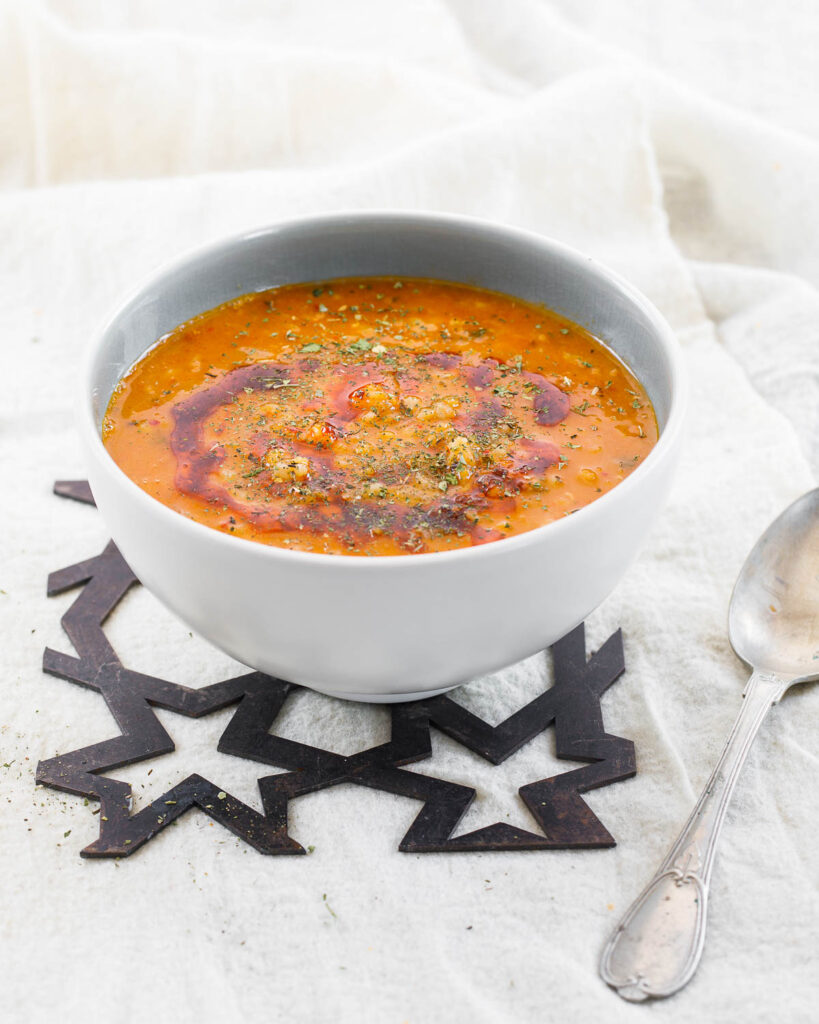
Serving suggestions
Ezogelin soup is a staple of the Turkish esnaf lokanta. Literally translated as “tradesmen’s restaurants”, these were originally set up to provide cheap, homemade food to local tradesmen. Much of the Turkish economy is still based on individual tradesmen, but these days students and regular workers also head to these places for lunch.
Whether at esnaf lokantas or elsewhere, soups like this are eaten as a starter before lunch or a main meal. The portions are usually quite small. Ordering a half portion – always an option in Turkish restaurants – is also very common.
Enjoy this soup with crusty bread and a generous wedge of lemon, to balance the heartiness of the soup to taste. Follow with a simple main, some rice or bulgur and perhaps some yoghurt or dessert.
If you’re not a big eater, this soup is hearty and filling enough to be enjoyed as a light lunch with bread and butter alongside.
The recipe servings are for small, starter sized portions, to be enjoyed while contemplating the cultural legacy of Ezo the Bride.

Ezogelin soup (Turkish lentil soup with rice & bulgur)
Ingredients
- 3 Tbsp olive oil, I use a mild extra virgin
- 1 onion, finely chopped
- 2 garlic cloves, finely chopped
- 175 g red lentils
- 30 g bulgur (coarse), medium grain
- 20 g rice, 1¾ Tbsp
- 1.2 l chicken stock (broth), vegetable stock or water
- 1 lemon, in wedges, to serve alongside the soup
- salt and pepper
Spiced tomato butter
- 3 Tbsp butter
- 30 g tomato paste
- 15 g Turkish sweet red pepper paste (tatlı biber salçası), tatlı biber salçası or chili paste (acı biber salçası) or more tomato paste
- 1 tsp pul biber (Aleppo pepper), pul biber
- 1 tsp dried mint
- 300 ml chicken stock (broth), broth, vegetable stock or water
How I make it
- Heat a thick bottomed pot over medium heat. Fry the onion in the olive oil, stirring regularly, until softened, but not coloured, 8–10 minutes. Add garlic and fry for another minute or two, stirring nearly constantly.
- Add lentils, bulgur and rice. Mix well. Pour in the stock along with a little salt and pepper, keeping in mind the spiced butter will add quite a bit of salt at the end. Bring to a boil, cover and reduce the heat to low. Simmer until the lentils, bulgur and rice are cooked through, 20–30 minutes. At this point, the soup will look and taste bland. Keep the faith.
- Meanwhile, melt the butter in a small pot. Stir in the tomato paste and pepper paste (if using). Stir constantly until combined. Add the Aleppo pepper and dried mint, then mix well again. Add the stock or water in two or three batches, mixing until completely combined between each addition. Remove from heat.
- Once the lentils, bulgur and rice are cooked, stir in the spiced tomato butter. Season one final time with salt and pepper to taste. Leave to cool for a few minutes.
- Serve with lemon wedges, pul biber and dried mint on the side for those who wish to add even more flavour to their soup.


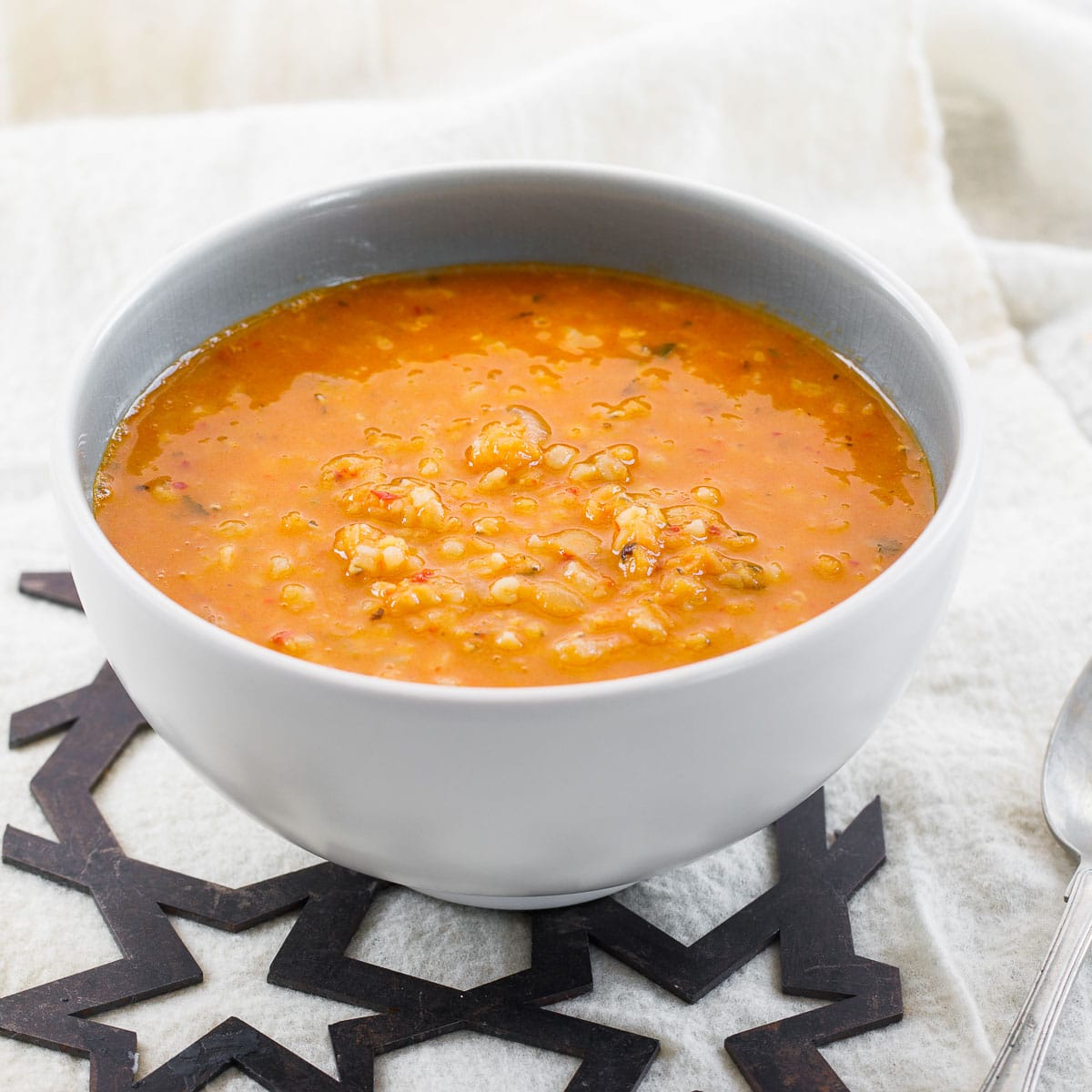

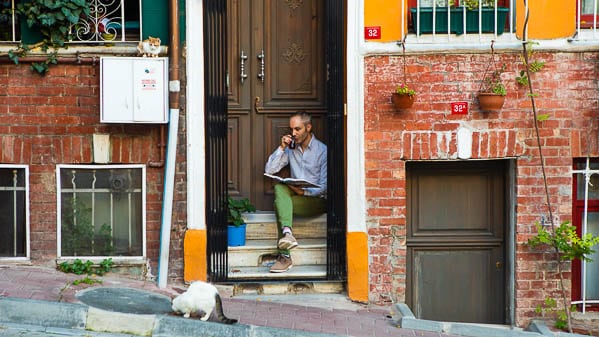
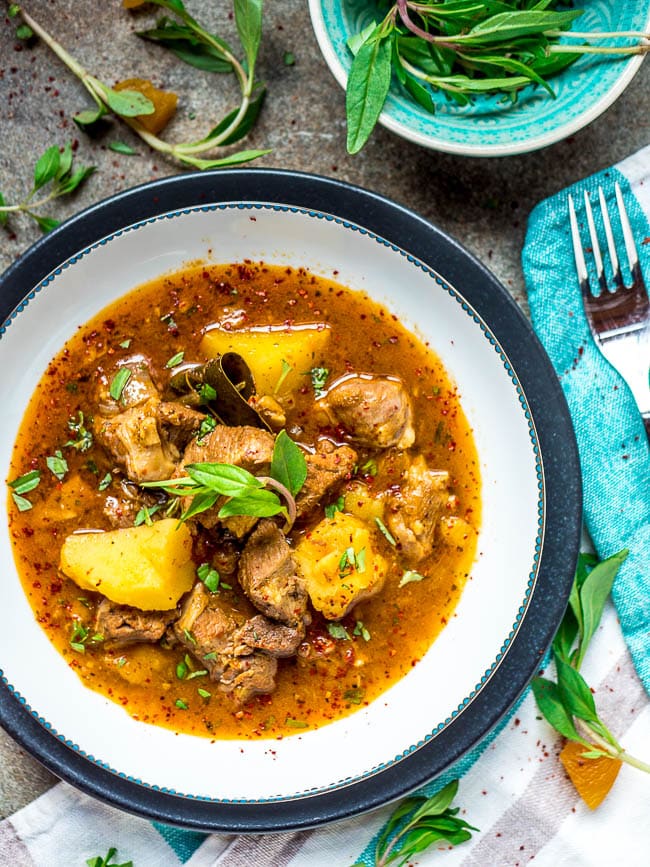
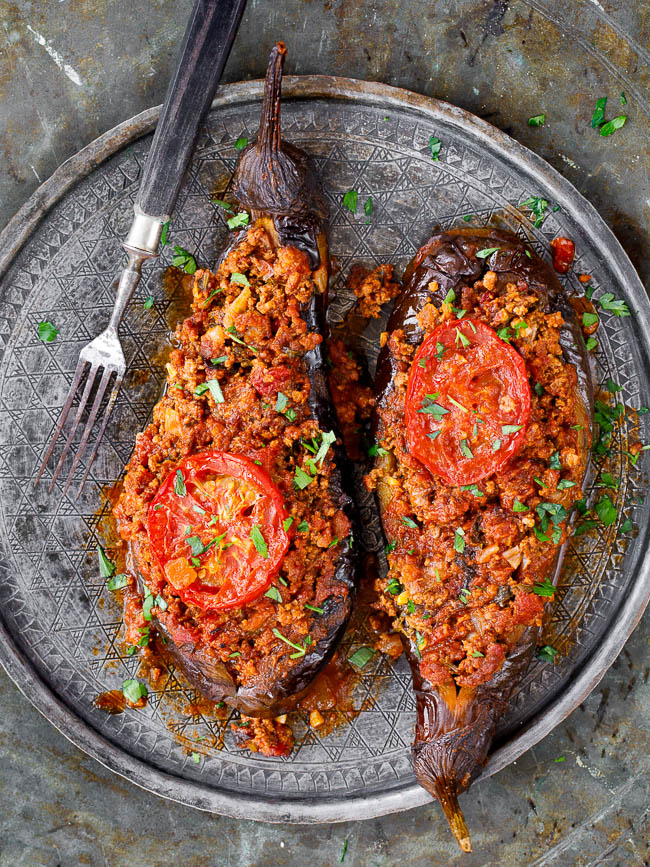


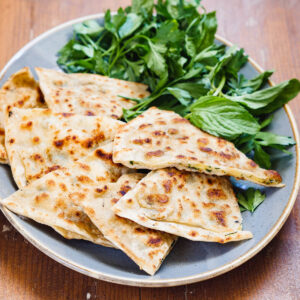

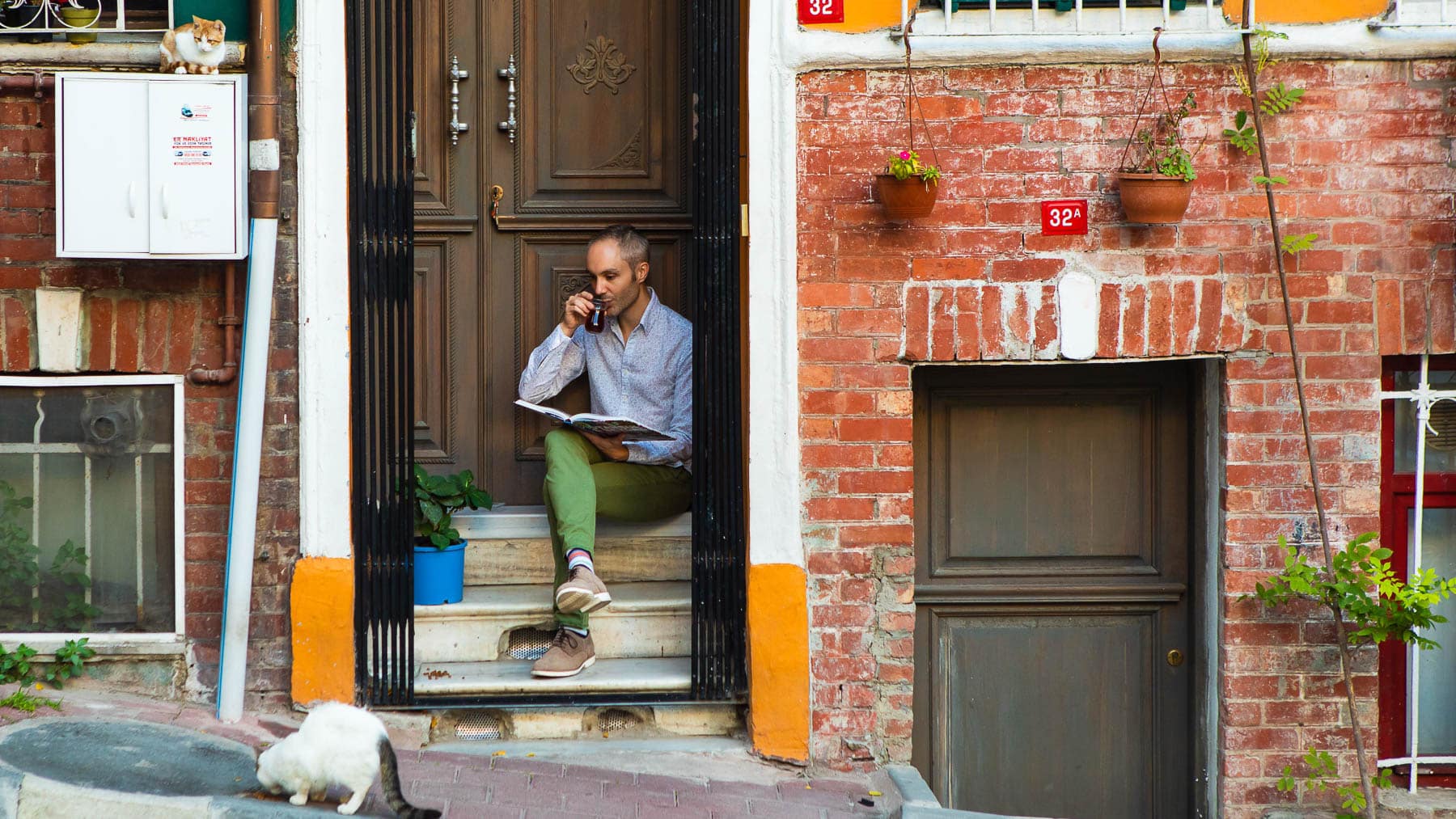



5 responses
This is the proper recipe. Have made a lot of times as it’s my favourite soup. Thanks!
It is absolutely delicious -just what I need in this cold weather
Really delicious soup. Filling, so flavoursome. I had it for dinner, them several breakfasts until all gone. Then I made it again.
I made this soup and it’s delicious!
I also made the imam bayıldı and that was equally delicious.
I’m very happy to hear! Thanks so much for sharing.